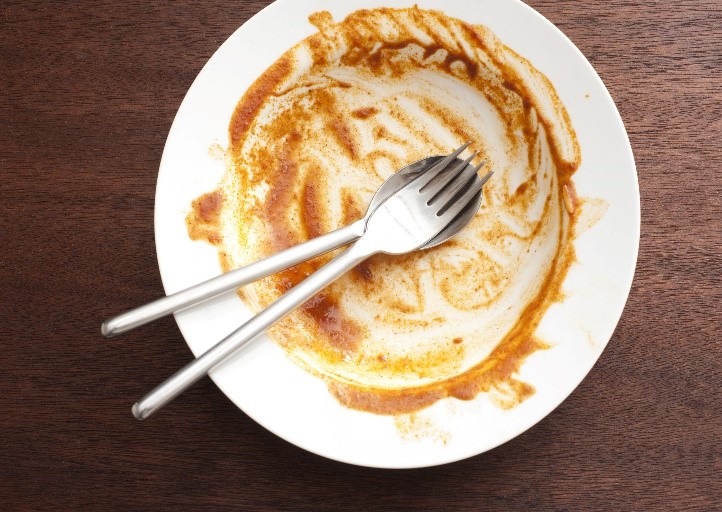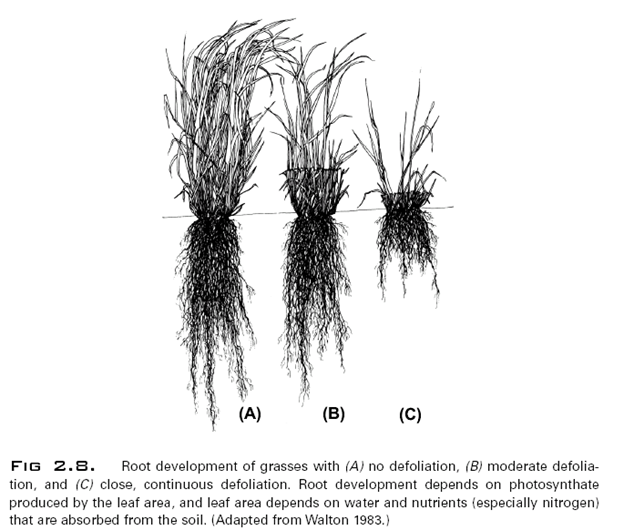
If plants could cry out, they would yell “Stop” when overgrazing begins to occur. Note the visible manure in the upper center and the crushed aluminum can in the lower center of the photograph. If the pasture was properly grazed, the manure and aluminum can would not have been visible at the distance that the photograph was taken. Picture contributed by Keith Johnson, Purdue University Extension Forage Specialist
This week, the calendar transitioned from spring to summer. Lack of rainfall in most of Indiana has unfortunately continued to be a concern to vegetation wellbeing, pastures included.
You likely were told to clean up all the food on your plate when you were a child sitting at the kitchen or dining room table. That was a good recommendation to reduce food waste and to make sure the dollars earned by your parent or guardian were not “thrown in the trash”.
Consider this – If the soil in the pasture is the plate and the forages growing in the soil is the food on the plate to be eaten, having livestock, analogous to the child at the table, grazing the soil bare of vegetation is a concern.

This Photo by Unknown Author is licensed under CC BY. Grazing a pasture “clean” like the plate above is not a wise decision for plant regrowth.
The figure below found in “Forages Volume 1 – an introduction to grassland agriculture” is an excellent illustration of what happens to root biomass and vegetative regrowth when overgrazing occurs and time is not allowed for plant recovery. If the illustration above doesn’t convince you of the negative consequences of overgrazing, the University of Kentucky Forage website time lapse video simulating orchardgrass response differences to intensity of vegetation removal should provide insight. Within the information shown by clicking on the link http://forages.ca.uky.edu/grazing, review “UK Orchardgrass” video found in the upper left corner. Keep the video content in your mind when you leave some residual growth in the pasture. You are doing the right thing!
If the illustration above doesn’t convince you of the negative consequences of overgrazing, the University of Kentucky Forage website time lapse video simulating orchardgrass response differences to intensity of vegetation removal should provide insight. Within the information shown by clicking on the link http://forages.ca.uky.edu/grazing, review “UK Orchardgrass” video found in the upper left corner. Keep the video content in your mind when you leave some residual growth in the pasture. You are doing the right thing!
Information found within the link https://www.extension.purdue.edu/extmedia/ID/ID-528-W.pdf provides a checklist of ideas that should be considered to feed beef cattle during dry weather. While the emphasis is on beef cattle, there are many components of the publication that have value for all livestock species. Review the information in the publication now so a plan can be developed if it needs to be put into action. Doing nothing, is not a wise plan.


